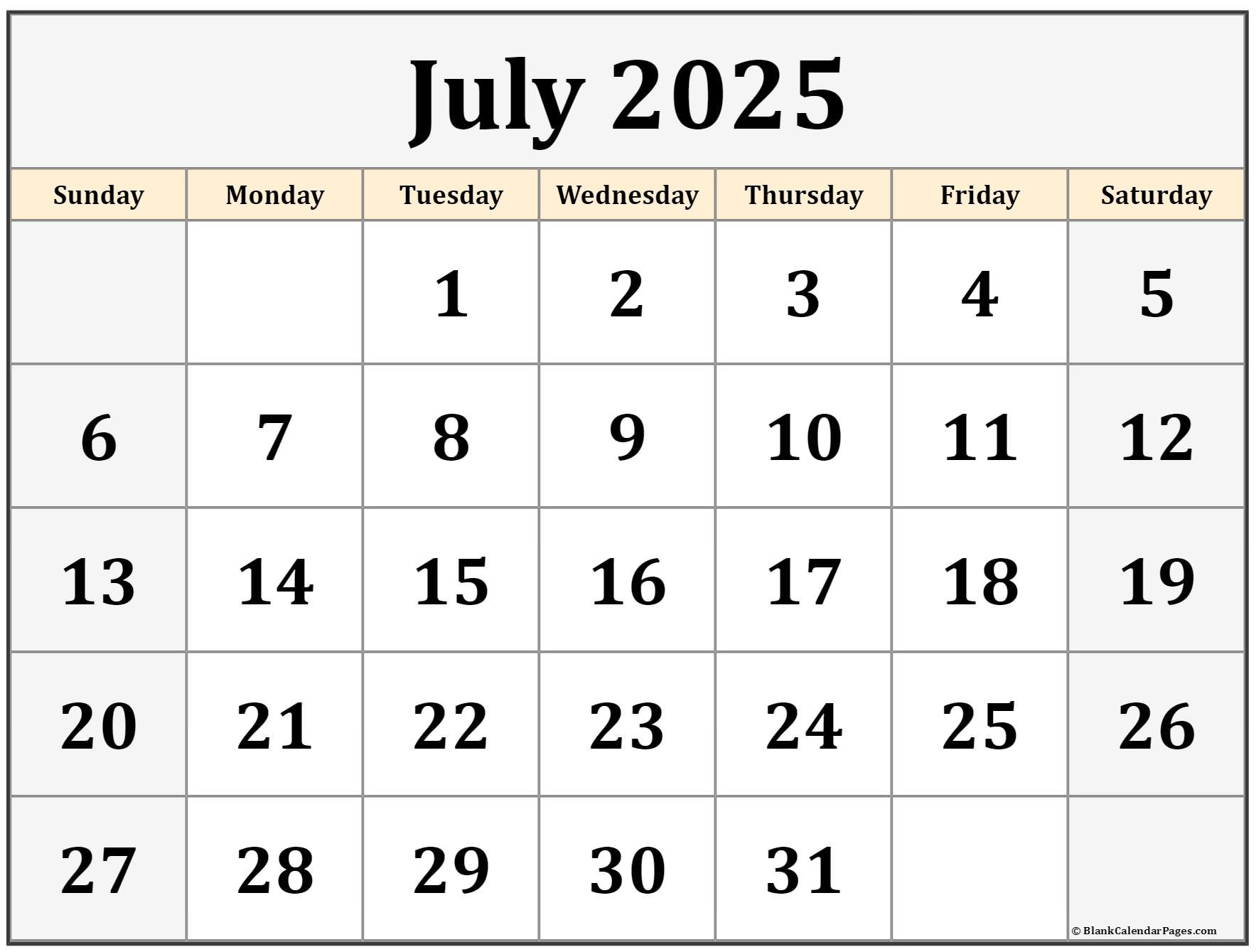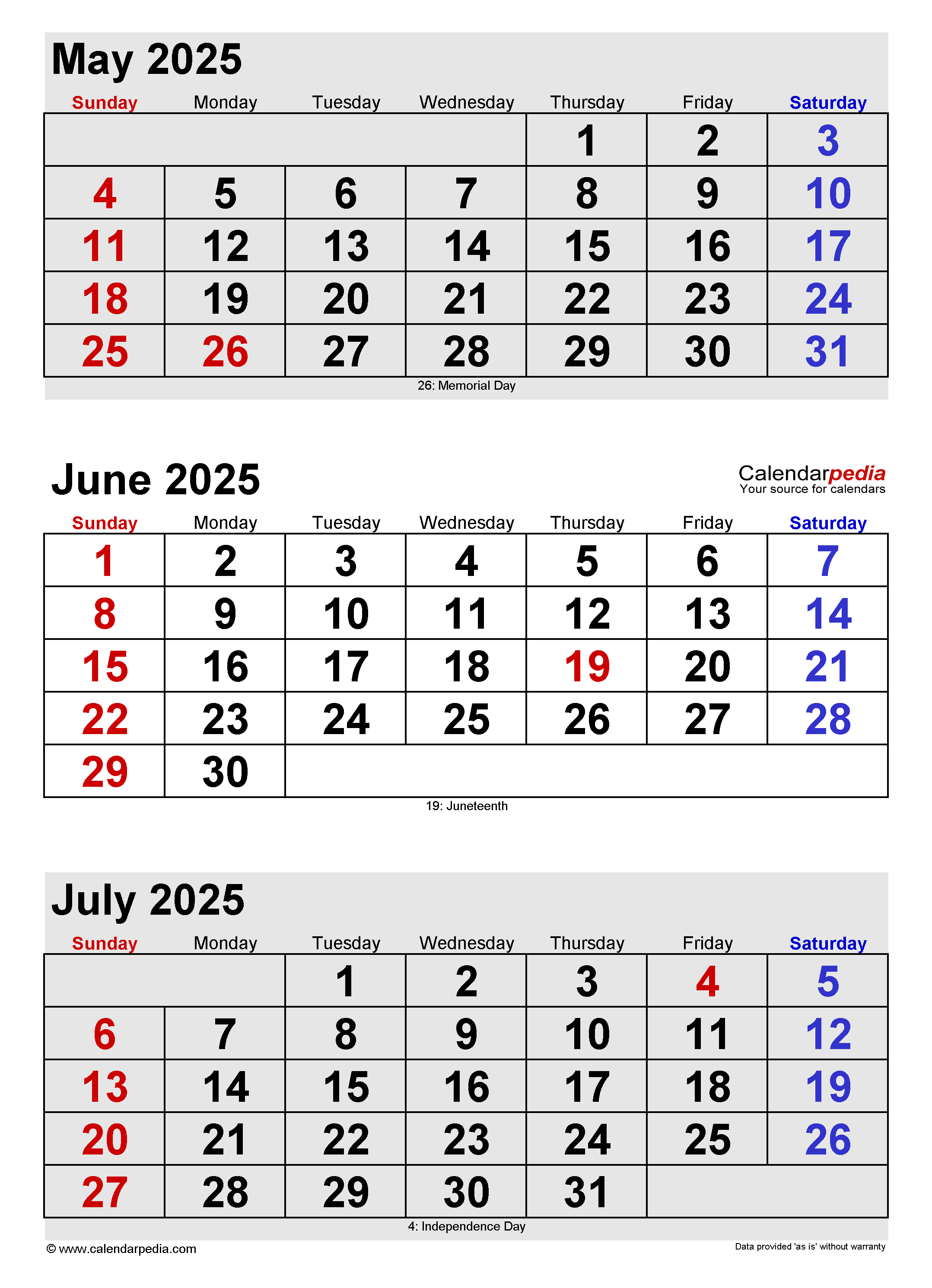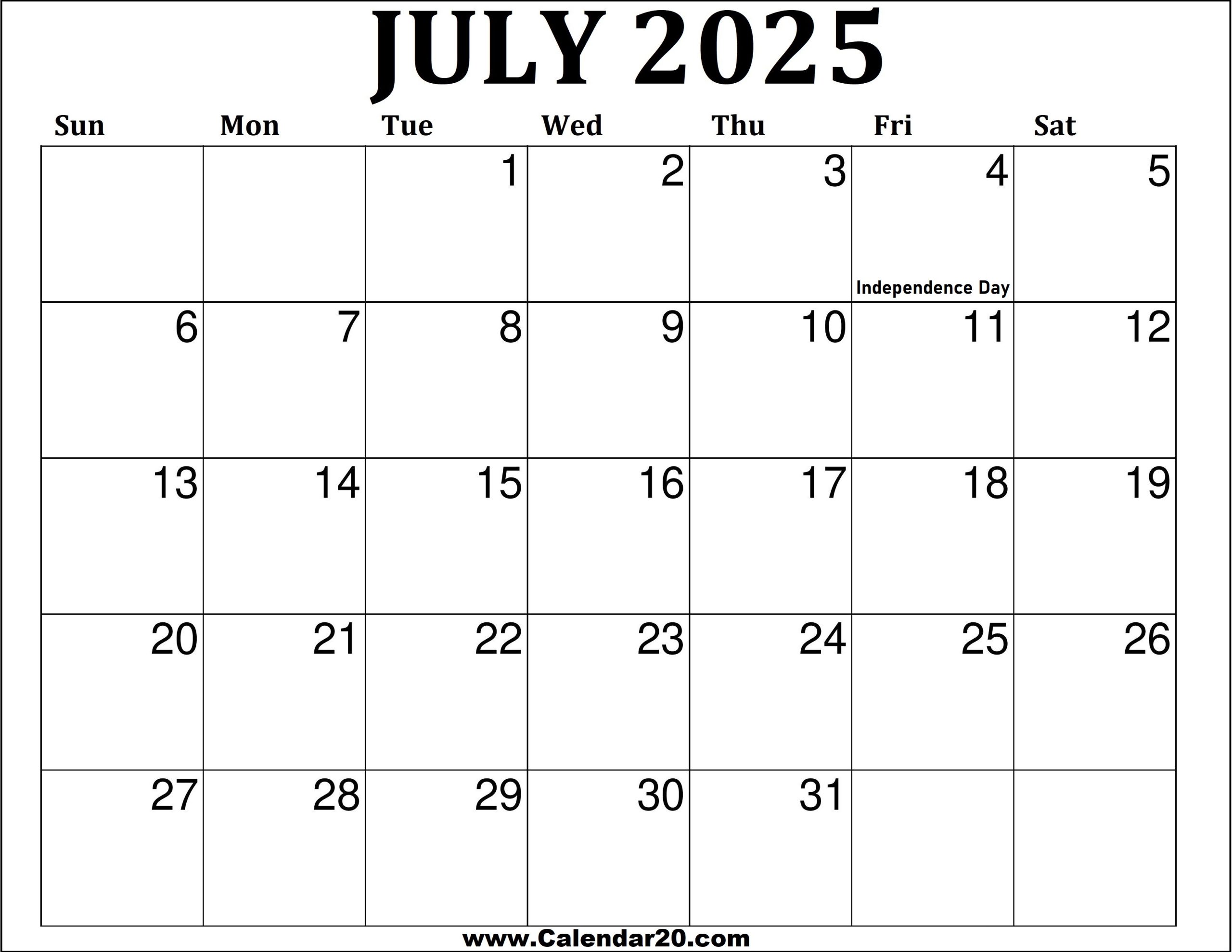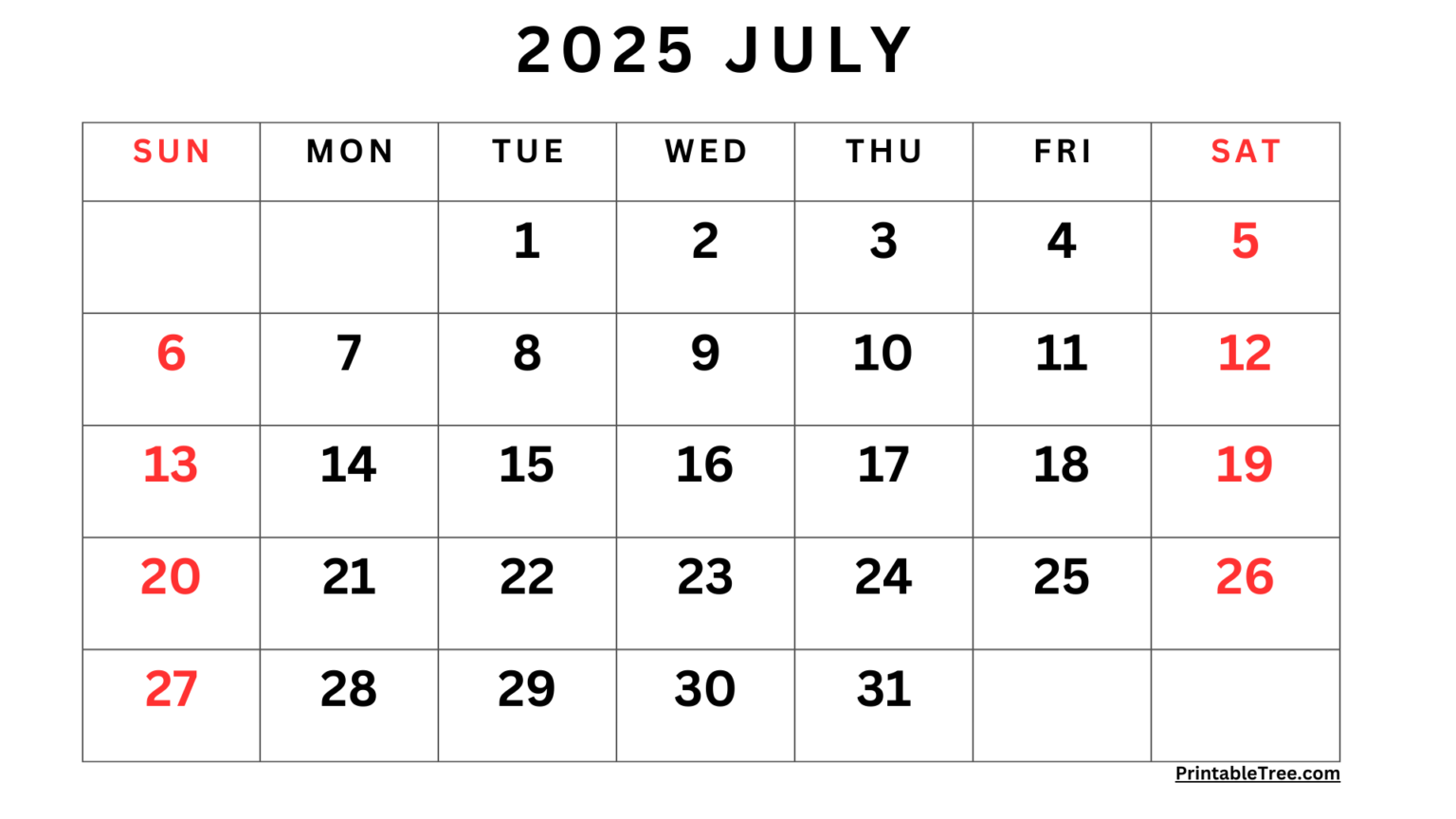May 2025 Calendar Like July
May 2025: A Calendar Mimicking July’s Structure – Exploring the Possibilities and Implications
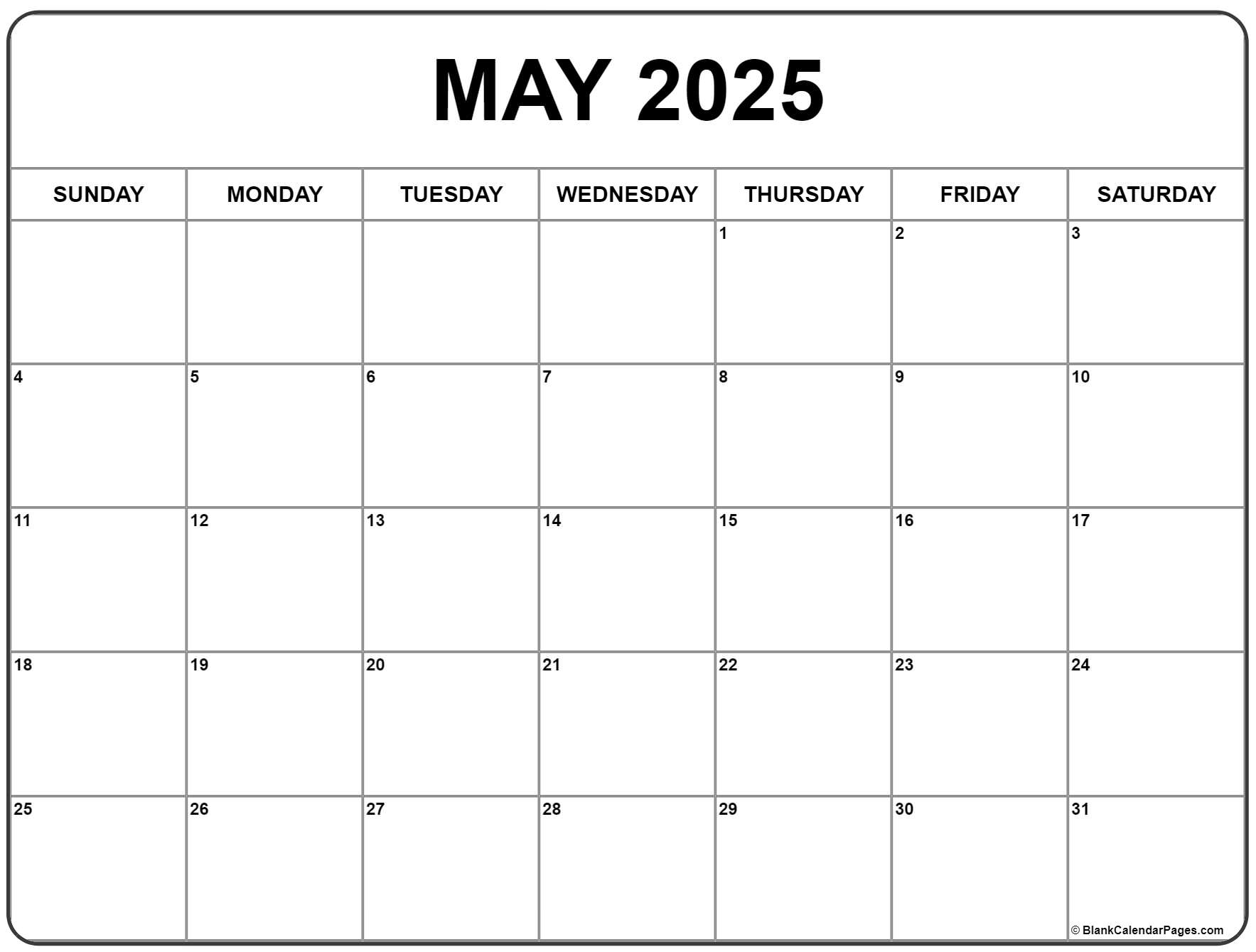
May 2025, a seemingly ordinary month in the Gregorian calendar, presents a fascinating hypothetical scenario: what if its structure mirrored that of July? This thought experiment, while seemingly whimsical, allows us to explore several intriguing aspects of calendar design, historical context, and the potential impact on various societal functions. This article delves into this hypothetical May 2025, examining its implications across diverse fields.
Understanding the July Analogy:
Before diving into the hypothetical, we need to define what "mirroring July’s structure" entails. July 2025, a typical Gregorian month, has 31 days, beginning on a Wednesday and ending on a Friday. Therefore, our hypothetical May 2025 would also comprise 31 days, commencing on a Wednesday and concluding on a Friday. This seemingly small alteration has significant ripple effects.
The Impact on Scheduling and Planning:
The most immediate impact of a 31-day May would be on scheduling and planning. Businesses, educational institutions, and individuals rely heavily on the predictability of the calendar. A shift in the number of days in May would necessitate adjustments across the board. Project timelines, academic calendars, and personal appointments would all require recalculation. The disruption could be substantial, particularly for industries with tightly scheduled operations, such as manufacturing or transportation.
Imagine the logistical challenges for businesses operating on monthly cycles. Payroll, billing, and inventory management systems would need to be adapted to accommodate the extra day. Similarly, agricultural planning, heavily reliant on seasonal cycles, would face significant adjustments. Farmers accustomed to planting schedules based on a 31-day July might need to re-evaluate their strategies for a 31-day May.
Social and Cultural Implications:
Beyond the practical aspects, the altered May would also have social and cultural ramifications. Many cultural events and celebrations are tied to specific dates in the calendar. Shifting May’s length could disrupt these traditions, requiring adjustments to their scheduling or potentially leading to the displacement of some events. The impact on religious observances, which often follow lunar or solar cycles, would need careful consideration.
Furthermore, the psychological impact of an extended May cannot be ignored. The perception of time is deeply intertwined with the calendar’s structure. An unexpectedly long May might affect people’s perception of the year’s progression, potentially leading to feelings of disorientation or even stress. This psychological impact warrants further investigation and consideration.
Economic Consequences:
The economic consequences of a 31-day May could be far-reaching. The disruption to established business cycles could lead to decreased productivity and increased costs. The need to adapt software and systems to accommodate the change would incur significant expenses. The potential for market volatility, resulting from the unexpected shift, cannot be ruled out.
The impact on financial markets would depend on the extent of preparedness. If the change is anticipated and businesses adapt proactively, the economic impact could be minimized. However, a sudden and unprepared shift could lead to considerable economic disruption. The uncertainty surrounding the change itself could negatively affect investor confidence.
Political and Governmental Implications:
Governments would face the immense task of coordinating the changes across various sectors. Legislative sessions, budget cycles, and electoral processes might need to be adjusted to accommodate the altered calendar. International agreements and treaties, which often rely on specific calendar dates, would require renegotiation or amendment.
The political implications could be significant, particularly in countries with rigid bureaucratic structures. The resistance to change could lead to delays and inefficiencies, further exacerbating the disruption. The political fallout from a poorly managed transition could be substantial.
Technological Adaptations:
The technological implications are significant. Software programs, databases, and scheduling applications would need to be updated to recognize the new calendar structure. This would require considerable resources and expertise, and the potential for errors and glitches is high. The cost of updating and maintaining these systems would be substantial.
Furthermore, the synchronization of global systems, such as financial transactions and communication networks, would require careful coordination to prevent disruptions. The potential for cascading failures, resulting from incompatible systems, cannot be overlooked.
The Hypothetical’s Value:
While the scenario of a July-like May 2025 remains hypothetical, exploring its implications provides valuable insights into the intricacies of calendar systems and their impact on various aspects of life. It highlights the dependence of modern society on the predictability and stability of the calendar and underscores the potential consequences of even seemingly minor alterations.
This thought experiment serves as a reminder of the importance of careful planning and coordination when considering changes to established systems. It emphasizes the interconnectedness of various societal functions and the ripple effects of even seemingly isolated modifications.
Conclusion:
The hypothetical May 2025, mirroring July’s structure, presents a complex and multifaceted challenge. The implications extend far beyond the simple alteration of a month’s length, impacting scheduling, economics, politics, technology, and even social and cultural practices. While this scenario is unlikely to occur in reality, it offers a valuable opportunity to understand the profound influence of the calendar on our lives and the importance of maintaining a stable and predictable temporal framework. The exercise highlights the necessity for flexibility and adaptability in the face of potential disruptions and underscores the crucial role of careful planning and coordination in managing societal systems. Further research into the potential impacts of similar calendar alterations could prove invaluable in preparing for unforeseen circumstances and enhancing the resilience of our societal structures.


